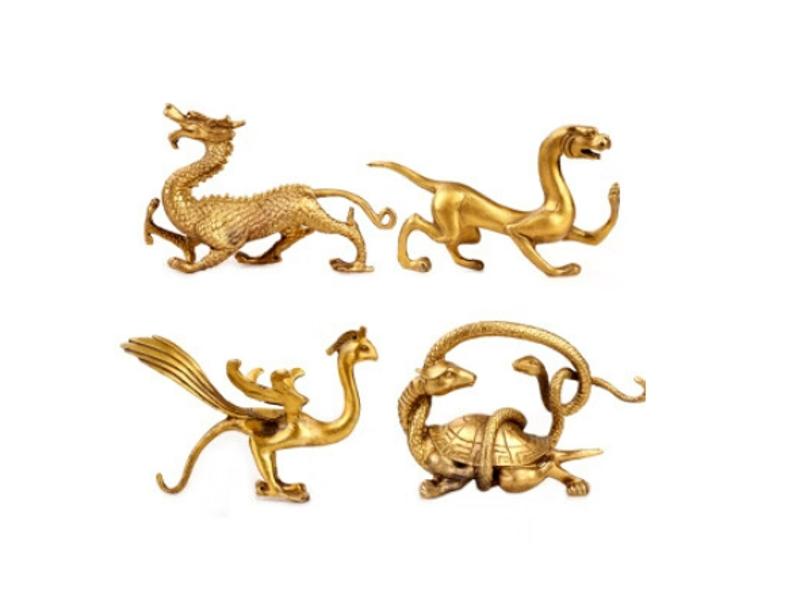
The Role of Shitennō-jinja Shrine in the Kyoto Imperial Palace Garden
1. Spiritual Protection of the Imperial Palace
- Guardians of the Four Directions: The Shitennō-jinja Shrine houses statues of the Four Heavenly Kings (Shitennō) who are believed to be powerful protectors in Buddhism. They are:
- Jikokuten (East): Guardian of humanity, often depicted holding a sword.
- Zōchōten (South): Guardian of growth and prosperity, often depicted holding a club.
- Kōmokuten (West): Guardian of wealth and harmony, often depicted playing a lute.
- Tamonten (North): Guardian of wisdom and knowledge, often depicted holding a pagoda.
- Ward off Evil and Misfortune: The shrine's location at a key intersection within the garden symbolizes the Four Heavenly Kings' vigilance over the palace grounds, protecting it from evil spirits and misfortune.
- Ensuring Peace and Stability: By safeguarding the Imperial Palace, the shrine indirectly served as a symbol of peace and stability for the entire nation.
2. Significance in Imperial Rituals and Ceremonies
- Part of the Imperial Palace Complex: The shrine, built in the early 7th century, highlights the deep integration of religious beliefs into the lives of the Imperial Family and the governance of Japan.
- Imperial Visits and Offerings: Emperors and members of the Imperial Family would pay respects at the shrine, offering prayers for the well-being of the nation and the success of their reign.
- Symbol of Imperial Authority: The shrine's presence within the palace grounds reinforced the concept of the Emperor as both a secular and spiritual leader, chosen by divine right.
3. Architectural and Aesthetic Significance
- Harmonious Integration with Nature: The shrine's simple and elegant design, characteristic of early Japanese architecture, blends seamlessly with the natural beauty of the surrounding garden.
- Tranquil Atmosphere for Contemplation: Its peaceful setting provides a space for quiet reflection and contemplation, offering a respite from the bustle of court life.
- A Testament to Japanese Craftsmanship: The shrine's construction demonstrates traditional Japanese carpentry techniques and the skillful use of natural materials, showcasing the country's rich artistic heritage.
Q&A
Q1: What are the names of the Four Heavenly Kings represented in the shrine? A1: Jikokuten (East), Zōchōten (South), Kōmokuten (West), and Tamonten (North).
Q2: Why was the shrine's location within the garden significant? A2: Its placement at a key intersection symbolized the Four Heavenly Kings' watchful protection over the entire palace.
Q3: How does the shrine reflect the connection between religion and the Imperial Family in Japan? A3: The shrine's presence within the palace complex and the Imperial Family's participation in rituals there demonstrate the deep integration of religious beliefs with the Imperial institution and governance.